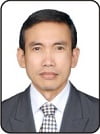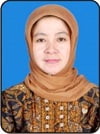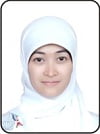Rumah Panggung in Kampung Naga, West Java, Indonesia and Minka Gassho Zukuri in Shirakawa-go, Japan: The Local Wisdom of Traditional Houses in Mitigating Earthquake
Abstract
ABSTRACT: The objectives of this research is to explore the geological conditions and tales about earthquake narrated by local people in Indonesia and Japan; and the local wisdoms contained in traditional houses in Kampung Naga, West Java, Indonesia and in Shirakawa-go, Japan in relation to seismic resistant. This research employed qualitative approach, an approach that tends to have a subjective perspective. Sources of data were obtained from literature review, interviews, and a FGD (Focus Group Discussion). The results showed that although the traditional houses in Kampung Naga, Indonesia and in Shirakawa-go, Japan have many differences, but both architectural models have in common purpose to reduce the damage to the building in case of earthquake. Building resilience in both traditional houses has similarities to the foundation and the materials used. “Rumah Panggung” in Kampung Naga and “Minka Gassho Zukuri” in Shirakawa-go do not have a rigid structure for their foundations, floors, and buildings. In the event of an earthquake, the houses just shifted their positions following the horizontal force of the earthquake. The buildings will move freely and return to their original positions after the quake without causing any serious damage. Difference between the two are house in Kampung Naga only uses materials that are lightweight and thin, while house in Shirakawa-go uses thick roof to adjust to the local climatic conditions. The people in Kampung Naga and Shirakawa-go are considered successful in building seismic resistant houses.
KEY WORDS: Rumah Panggung in Kampung Naga, local wisdom, Minka Gassho Zukuri in Shirakawa-go, mitigation earthquake, and local natural conditions.



About the Authors: Dr. Ahmad Yani is a Senior Lecturer at the Department of Geography Education, Faculty of Social Studies Education UPI (Universitas Pendidikan Indonesia or Indonesia University of Education) in Bandung. Dr. Lilis Widaningsih and Rosita, M.A. are Research Scholars at the UPI Bandung, Jalan Dr. Setiabudhi No.229 Bandung 40154, West Java, Indonesia. Corresponding author is: ahmadyani@upi.edu
How to cite this article? Yani, Ahmad, Lilis Widaningsih & Rosita. (2016). “Rumah Panggung in Kampung Naga, West Java, Indonesia and Minka Gassho Zukuri in Shirakawa-go, Japan: The Local Wisdom of Traditional Houses in Mitigating Earthquake” in TAWARIKH: International Journal for Historical Studies, Vol.7(2) April, pp.275-296. Bandung, Indonesia: Minda Masagi Press and UIN SGD Bandung, ISSN 2085-0980.
Chronicle of the article: Accepted (February 28, 2016); Revised (March 30, 2016); and Published (April 28, 2016).
Keywords
Full Text:
PDFReferences
Anggraeni, N. (2013). “Mitos Gempa Bumi di Tatar Sunda” in Arsip Budaya Nasional. Available online also at: http://arsipbudayanusantara.blogspot.co.id/2015/11/mitos-gempa-bumi-di-tatar-sunda.html [accessed in Bandung, Indonesia: December 19, 2015].
Anonymous. (2016). “Understanding the Waveform: ESG Solutions”. Available online also at: https://www.esgsolutions.com/technical-resources/microseismic-knowledgebase [accessed in Bandung, Indonesia: December 19, 2015].
BNPB [Badan Nasional Penanggulangan Bencana]. (2007). Law of the Republic of Indonesia Number 24 of 2007 Concerning Disaster Management. Jakarta: BNPB [Badan Nasional Penanggulangan Bencana or National Agency Disaster Management]. Available online also at: http://www.ifrc.org/docs/IDRL/956EN.pdf [accessed in Bandung, Indonesia: December 19, 2015].
Borland, Janet. (2006). “Capitalising on Catastrophe: Reinvigorating the Japanese State with Moral Values Through Education Following the 1923 Great Kantō Earthquake” in Modern Asian Studies, 40(4), October, pp.875-907.
Bozorgnia, Yousef & Vitelmo V. Bertero. (2004). Earthquake Engineering: From Engineering Seismology to Performance-Based Engineering. New York: CRC Press.
Clancey, Gregory. (2006). Earthquake Nation: The Cultural Politics of Japanese Seismicity. Berkeley: University of California Press.
Coaldrake, William H. (1996). Architecture and Authority in Japan: Nissan Institute/Routledge Japanese Studies Series. London: Routledge.
Condie, K.C. (1997). Plate Tectonics and Crustal Evolution. New York: Butterworth-Heinemann, 4th edition.
Creswell, J.W. (1998). Qualitative Inquiry and Research Design: Choosing aming Five Traditions. London: Sage Publications.
Diarta, I.K.S. (2007). “Sekali Lagi, Bangun Pariwisata Berbasis Kearifan Lokal” in newspaper of Bali Post. Den Pasar, Bali: 1 February. Available online also at: http://habiscus.blogspot.co.id/2007_04_01_archive.html [accessed in Bandung, Indonesia: December 19, 2015].
Djaelani, A.R. (2013). “Teknik Pengumpulan Data dalam Penelitian Kualitatif” in Majalah Ilmiah Pawiyatan, Vol.XX, No.1 [March].
“Doburoku Festival: Photo by Sightseeing Navigation in Shirakawa-go Shirakawa Village Office”. Available online also at: http://shirakawa-go.org/en/sightseeing/50/ [accessed in Bandung, Indonesia: December 19, 2015].
Fadillah, T. (2011). “Mitigasi Bencana Gempa Bumi di Sekitar Sesar Lembang” in Bulletin Vulkanologi dan Bencana Geologi, Vol.6, No.3 [December], pp.1-5.
Fitri, I., A. Yani & F. Ahmad. (2015). “Conservation of Tangible Cultural Heritage in Indonesia: A Review Current National Criteria for Assessing Heritage Value” in PROCEDIA: Social and Behavioral Sciences, 184 (August), pp.71–78. Available online also at: http://doi.org/10.1016/j.sbspro.2015.05.055 [accessed in Bandung, Indonesia: December 19, 2015].
Foster, R. et al. (2005). Tsunami and Earthquake Damage to Coral Reefs of Aceh, Indonesia. California, USA [United States of America]: Reef Check Foundation, Pacific Palisades.
Foulger, Gillian R. (2010). Plates versus Plumes: A Geological Controversy. New York: Wiley-Blackwell.
Fowler, C.M.R. (1990). The Solid Earth. Cambridge, UK [United Kingdom]: Cambridge University Press.
Gaillard, J.C. (2007). “Resilience of Traditional Societies in Facing Natural Hazards” in Disaster Prevention and Management, Vol.16, No.4, pp.522-544.
Gimpelson, Ilana et al. (2016). “Law and Emergencies: A Comparative Overview, the Minerva Center for the Rule of Law under Extreme Conditions”. Available online also at: http://minervaextremelaw.haifa.ac.il/images/Emergency_Laws_and_Regulations_-in_Japan-_19-_Jan2016.pdf [accessed in Bandung, Indonesia: March 2, 2016].
“Hajat Sasih or Annual Ceremony”. Available online also at: www.inddit.com [accessed in Bandung, Indonesia: March 2, 2016].
Hermawan, Iwan. (2012). “Pola Permukiman Tradisional Sunda: Studi terhadap Permukiman Masyarakat Kampung Naga” in Supratikno Rahardjo [ed]. Arkeologi Pola Permukiman dan Lingkungan Hidup. Jatinangor: Alqaprint.
Hermawan, Iwan. (2014). “Bangunan Tradisional Kampung Naga: Bentuk Kearifan Warisan Leluhur Masyarakat Sunda” in Jurnal Sosio Didaktika, Vol.1, No.2, pp.141-150. Available online also at: file:///C:/Users/acer/Downloads/1256-2196-1-SM.pdf [accessed in Bandung, Indonesia: March 2, 2016].
Heys, Jeffrey. (2015). “Land and Geography of Indonesia”. Available online also at: http://factsanddetails.com/indonesia/Nature_Science_Animals/sub6_8a/entry-4078.html [accessed in Bandung, Indonesia: March 2, 2016].
“Illustration of Kashima Crippling Namazu: The Giant Catfish Monster”. Available online also at: http://noretz-area.blogspot.co.id [accessed in Bandung, Indonesia: December 19, 2015].
Interview with Informant A, a Kuncen (caretaker of sacred place) of Kampung Naga, on 9 October 2015.
Interview with Informant B, owner of Gassho Zukuri house in Japan, on 10 November 2015.
Iryana, Wahyu. (2014). “The Mythology of Kampung Naga Community” in AL-ALBAB: Borneo Journal of Religious Studies, Vol.3, No.2 [December].
JPC [Japan Property Central]. (2016). “Earthquake Building Codes in Japan”. Available online also at: http://japanpropertycentral.com/real-estate-faq/earthquake-building-codes-in-japan/ [accessed in Bandung, Indonesia: January 15, 2016].
Karnadi, E. (2013a). “Mengenal Gaya Arsitektur (6): Arsitektur Jepang”. Available online also at: http://kontemporer2013.blogspot.com/2013/09/gaya-arsitektur-jepang.html [accessed in Bandung, Indonesia: January 15, 2016].
Karnadi, E. (2013b). “Nama-nama dan Foto Rumah Adat 34 Provinsi di Indonesia”. Available online also at: http://kontemporer2013.blogspot.com/2014/01/gambar-dan-rumah-adat-indonesia.html [accessed in Bandung, Indonesia: January 15, 2016].
Kim, Yung-Hee. (1994). Songs to Make the Dust Dance: The Ryojin Hisho of Twelfth-Century Japan. Berkeley, CA: University of California Press.
Lombard. Denys. (2005). Nusa Jawa, Silang Budaya: Buku I. Jakarta: Gramedia Pustaka Utama, Translation.
Mat Tahir, Ismail & Shaharuddin Ahmad. (2014). “Tsunami dan Impaknya ke atas Negara Persisiran Lautan Pasifik” in SOSIOHUMANIKA: Jurnal Pendidikan Sains Sosial dan Kemanusiaan, Vol.7(2) November, pp.213-222. Bandung, Indonesia: Minda Masagi Press, UNHAS Makassar, and UNIPA Surabaya, ISSN 1979-0112.
Maulia, Erwida. (2009). “Aftershock and Aid Follow Earthquake” in newspaper of The Jakarta Post. Jakarta: 5 September.
Merritt, Frederick S. & Jonathan T. Ricketts. (2001). Building Design and Construction Handbook. New York: McGraw-Hill, sixth edition.
Miyazawa, S. (2005). Shirakawa-go Gassho Zukuri Q & A. Tokyo: Tomo Publisher.
Nas, J.M. (2009). Masa Lalu dalam Masa Kini: Arsitektur Indonesia. Jakarta: PT Gramedia Pustaka Utama, Translation.
Nazarov, E. (2011). Emergency Response Management in Japan. Azerbaijan: Crisis Management Center, Ministry of Emergency Situations of the Republic of Azerbaijan.
News on “Earthquake building codes in Japan”. Available online also at: http://japanpropertycentral.com/real-estate-faq/earthquake-building-codes-in-japan/ [accessed in Bandung, Indonesia: March 2, 2016].
News on “Getting to Know the Style of Traditional Japanese Architecture House (Minka)”. Available online also at: http://international-face.blogspot.co.id/2015/09/ [accessed in Bandung, Indonesia: March 2, 2016].
News on “Japanese Goods Help People Around the World Prepare for Disasters: From Manga to Card Games, Educational Creations Leverage the Experience of the Earthquake-Prone Nation”. Available online also at: http://www.jica.go.jp/english/low/news/field/2014/150313_02.html [accessed in Bandung, Indonesia: March 2, 2016].
Nugroho, A.S. (2006). “Perbandingan Budaya Indonesia dan Jepang”. Available online also at: https://asnugroho.wordpress.com/2006/08/31/perbandingan-budaya-indonesia-dan-jepang [accessed in Bandung, Indonesia: March 2, 2016].
Nuryadin. (2015). Arsitektur Tradisional Sunda dalam Bingkai Arsitektur Nusantara, Jilid I: Konsep dan Bentuk. Bandung: UPI [Universitas Pendidikan Indonesia] Press.
Ochiai, C. (2014) “Traditional Community-Based Disaster Management in World Heritage Site of Shirakawa Village” in R. Shaw [ed]. Community Practices for Disaster Risk Reduction in Japan. Japan: Springer. DOI 10.1007/978-4-431-54246-9_9.
“Primary and Secondary Waves”. Available online also at: https://esgsolutions.com/technical-resources/microseismic-knowledgebase/understanding-the-waveform [accessed in Bandung, Indonesia: March 2, 2016].
“Reducing Vulnerability of School Children to Earthquakes: A Project of School Earthquake Safety Initiative (SESI)”. Available online also at: http://www.preventionweb.net/files/2951_SESIOutcomeallfinal.pdf [accessed in Bandung, Indonesia: March 2, 2016].
“Ring of Fire”. Available online also at: http://pubs.usgs.gov [accessed in Bandung, Indonesia: March 2, 2016].
Ross, Z.E. & Y. Ben-Zion. (2014). “Automatic Picking of Direct P, S Seismic Phases and Fault Zone Head Waves” in Geophysical Journal International, 199, pp.368–381, doi: 10.1093/gji/ggu267/gji/seismology.
Schellart & Rawlinson. (2009). “Convergent Plate Margin Dynamics: New Perspectives from Structural Geology, Geophysics, and Geodynamic Modelling” in Tectonophysics Journal. Available online also at: www.elsevier.com/locate/tecto [accessed in Bandung, Indonesia: January 15, 2016].
Skovdal, Morten & Flora Cornish. (2015). “Qualitative Research for Development: A Guide for Practitioners”. Available online also at: http://www.developmentbookshelf.com/doi/book/10.3362/9781780448534 [accessed in Bandung, Indonesia: January 15, 2016].
Shearer, Peter. (1999). Introduction to Seismology. Cambridge: Cambridge University Press.
Smits, Gregory. (2006). “Shaking up Japan: Edo Society and the 1855 Catfish Picture Prints” in Journal of Social History, 39(4), Summer, pp.1045–1078. Available online also at: http://www.personal.psu.edu/faculty/g/j/gjs4/Shaking_Up_Japan.pdf [accessed in Bandung, Indonesia: January 15, 2016].
Somantri, G.R. (2005). “Memahami Metode Kualitatif” in Jurnal Makara: Sosial Humaniora, Vol.9, No.2 [December], pp.57-65. Available online also at: http://hubsasia.ui.ac.id/index.php/hubsasia/article/viewfile/122/110 [accessed in Bandung, Indonesia: January 15, 2016].
Suhandono, S. (2010). “Smong: Konsep Kearifan Lokal Pulau Simeulue untuk Tsunami Early Warning System”. Unpublished paper for the Article Writing Contest, organized by IPB (Institut Pertanian Bogor or Bogor Agricultural University). Available online also at: http://ipb.ac.id/lombaartikel/pendaftaran/uploads/tpb/sosial-dan-ekonomi/Septian-Suhandono-SMONG.pdf [accessed in Bandung, Indonesia: January 15, 2016].
Sumita, I. & M.I. Bergman. (2007). Inner-Core Dynamics. USA [United States of America]: Elsevier B.V. Available online also at: http://booksite.elsevier.com/brochures/geophysics/PDFs/00132.pdf [accessed in Bandung, Indonesia: March 2, 2016].
Usami, Tatsuo. (2002). “Historical Earthquakes in Japan” in William H.K. Lee et al. [eds]. International Geophysics. Tokyo: Academic Press, pp.799–802.
Wibowo, A.S. (2015). “Conservation of Wooden Architecture: Willingness, Support, and Tradition” in PROCEDIA: Social and Behavioral Sciences, 184 [August], pp.388–393. Available online also at: http://doi.org/10.1016/j.sbspro.2015.05.107 [accessed in Bandung, Indonesia: March 2, 2016].
Widaningsih, Lilis & Diah Cahyani. (2014). “Material Berkelanjutan pada Arsitektur Kampung Adat: Kajian terhadap Penerapan Arsitektur Hijau pada Kampung Naga di Kabupaten Tasikmalaya”. Paper presented in the Seminar on Traditional Houses: Transforming the Traditional Values in Currently Architecture.
Yani, A., L. Widaningsih & Rosita. (2015). “Local Wisdom of Traditional House in Earthquake Risk Mitigation: Comparison of Traditional House in Kampung Naga, West Java and Minka Gassho-Zukuri Architecture in Shirakawa Village, Gifu Perfecture, Japan”. Paper presented in an International Conference on ICIEVE (Innovation in Engineering and Vocational Education), organized and published by Atlantis Press.
Yani, A., L. Widaningsih & Rosita. (2016). Rumah Panggung di Kampung Naga dan Minka Gassho Zukuri di Shirakawa-go. Bandung: Rizqi Press, ISBN [International Standard Book Number] 978-602-6971-20-3.
Yansen. (2010). “Indonesia and the Great Challenge of Natural Disasters” in newspaper of The Jakarta Post. Jakarta: 2 November.
Young, Michiko. (2004). Introduction to Japanese Architecture. Singapore: Tuttle Publishing.
